My Black-Market Butt Injections Rotted My Flesh
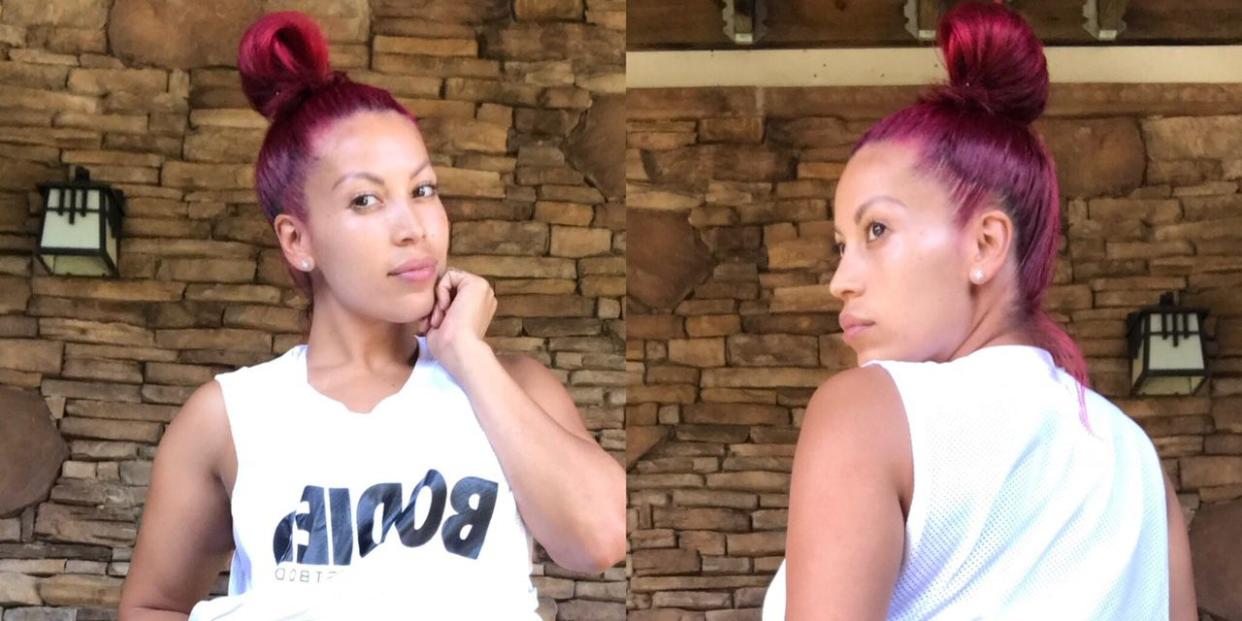
When I woke up, there was a row of stitches along each side of my butt crack and below each cheek where a surgeon had sliced into my flesh, peeled back my skin, and opened me like a book.
He'd spent nearly six hours extracting the silicone pellets I'd had injected eight years earlier in pursuit of the bubble butt I wasn't born with. Like table salt scattered throughout a sandbox, the silicone had spread through my tissue, making it difficult for him to locate and extract without digging out large chunks of me with it.
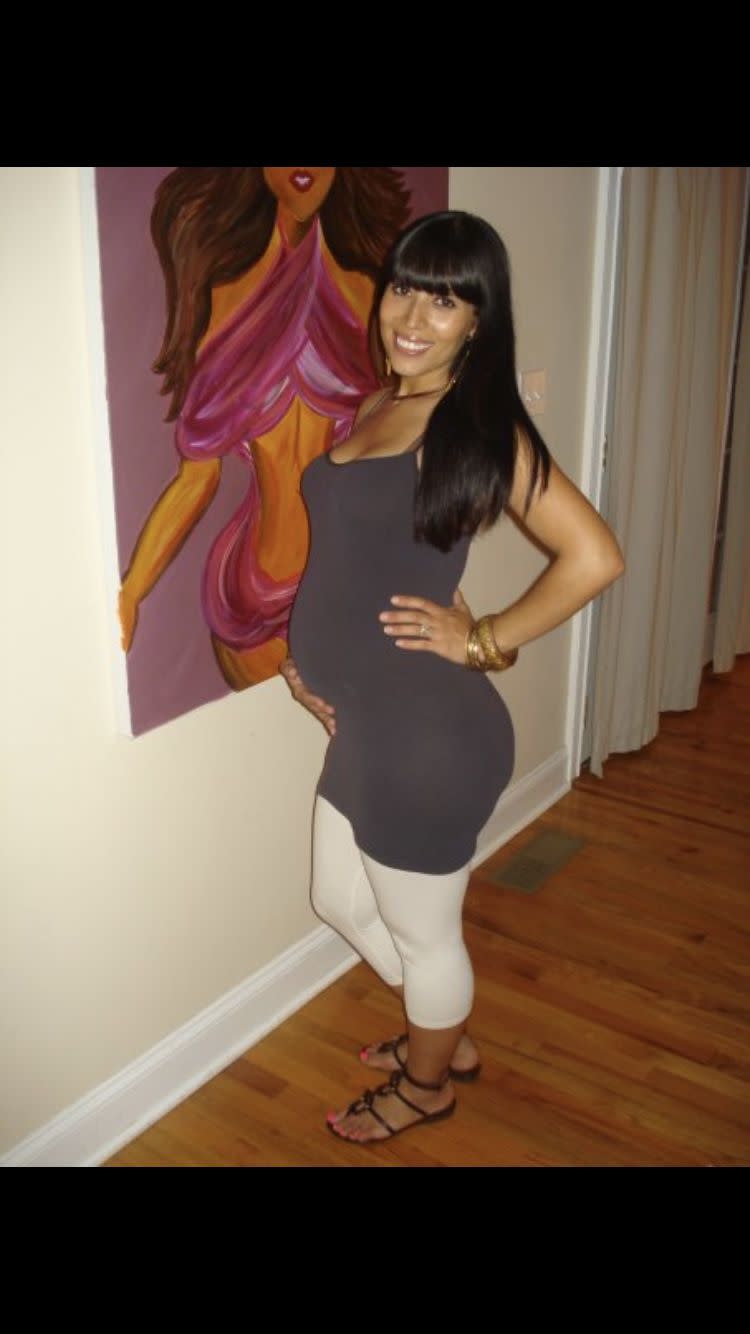
I got my butt injections in 2010, about a year after I had my second child. My fiancé was spending most of his time at school and work, and I got lonely raising two kids by myself. In hindsight, I realize I was suffering from postpartum depression. As a result, I'd inadvertently lost weight, which left me feeling more insecure than ever before. Although I was working as a trainer at the time, my interest in fitness was waning. I briefly considered joining the military or police force but just couldn't figure out what to do with my life.
At the time, my fiancé worked at a well-known strip club in Atlanta, where he was constantly surrounded by beautiful women with perfectly curvy figures that looked different from mine: I'd always been really lean with a small waist and a butt I'd describe as wide but not bubbly.
I'd been training some of the strip club dancers when I realized many of them credited their curves to silicone butt injections. Had I done any research, I would have realized that silicone injections aren't FDA-approved, and women have died from similar procedures, which are often done in unsterile environments by unlicensed practitioners with unregulated materials.
Young, dumb, insecure, and depressed, I got the number of the person who'd treated the dancers and planned to meet him in a hotel room with $2,000 in cash to receive my own injections. There, I got enough filler in the middle of each butt cheek to add about two or three inches to my profile.
The procedure took about an hour, after which my butt throbbed as though it had been stung by a bee but 100 times worse. I had to lie on my stomach for several more hours to avoid sitting on the treated area, and then I was dismissed with directions to regularly massage the area over the next 48 hours to prevent it from hardening.
After a few days, the soreness subsided, although the discomfort never fully went away.
I'd been looking for a way to feel better about myself, and it worked - at least for the first year. My new silhouette gave me the confidence I needed to end things with my son's father - we never did get married - and shake off my postpartum depression.
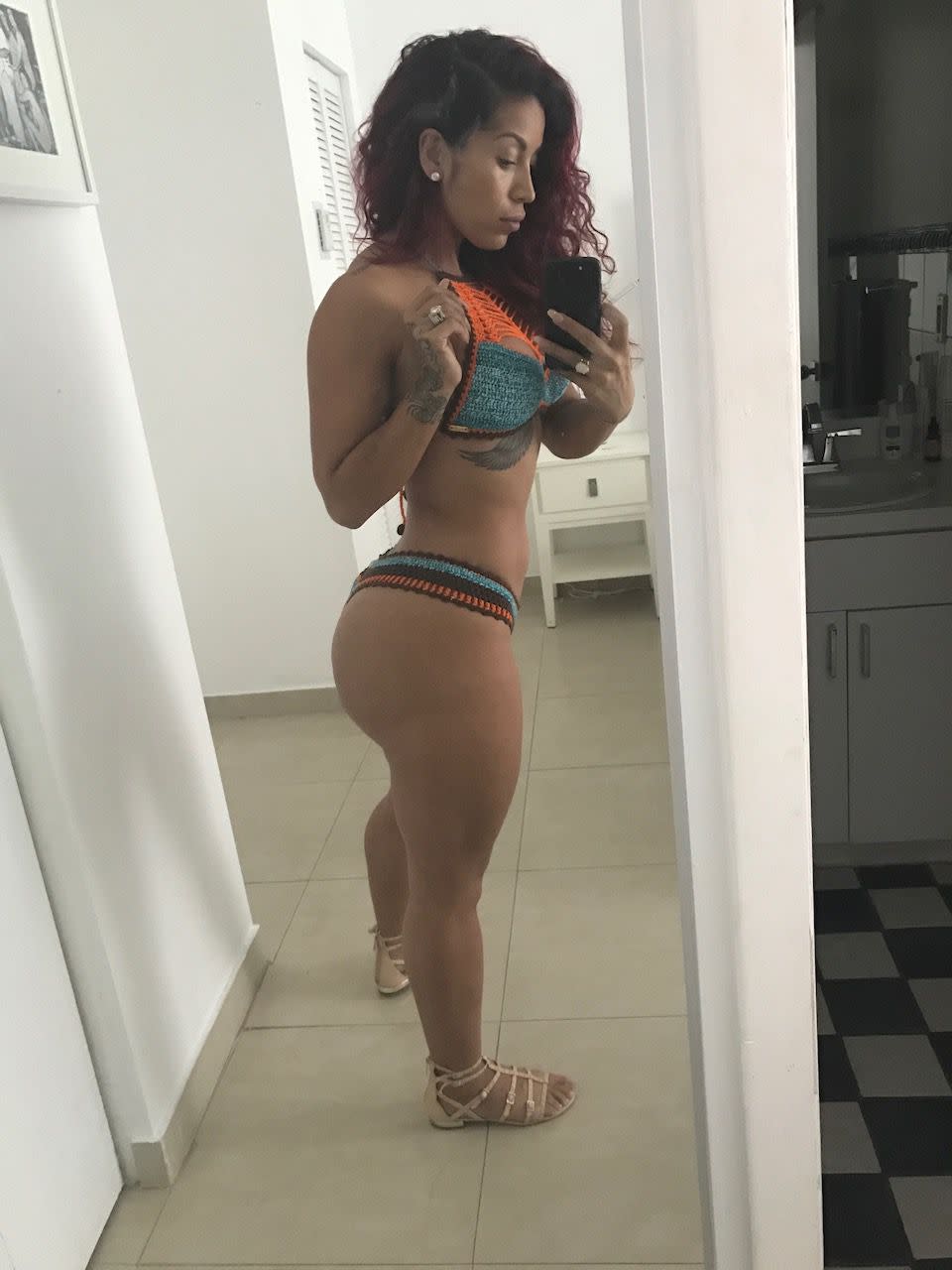
I decided to remain in the fitness industry and I'm glad I did: As one of the only prominent female trainers in Atlanta at the time, I began to make a name for myself. When I joined Instagram in 2012, I gained about 5,000 followers within the first 24 hours, doubling that in the first week all by posting photos of me in my workout gear at the gym. Although I didn't explicitly tell my followers that I'd had work done, I never said I built my butt in the gym or flaunted it to promote my training services.
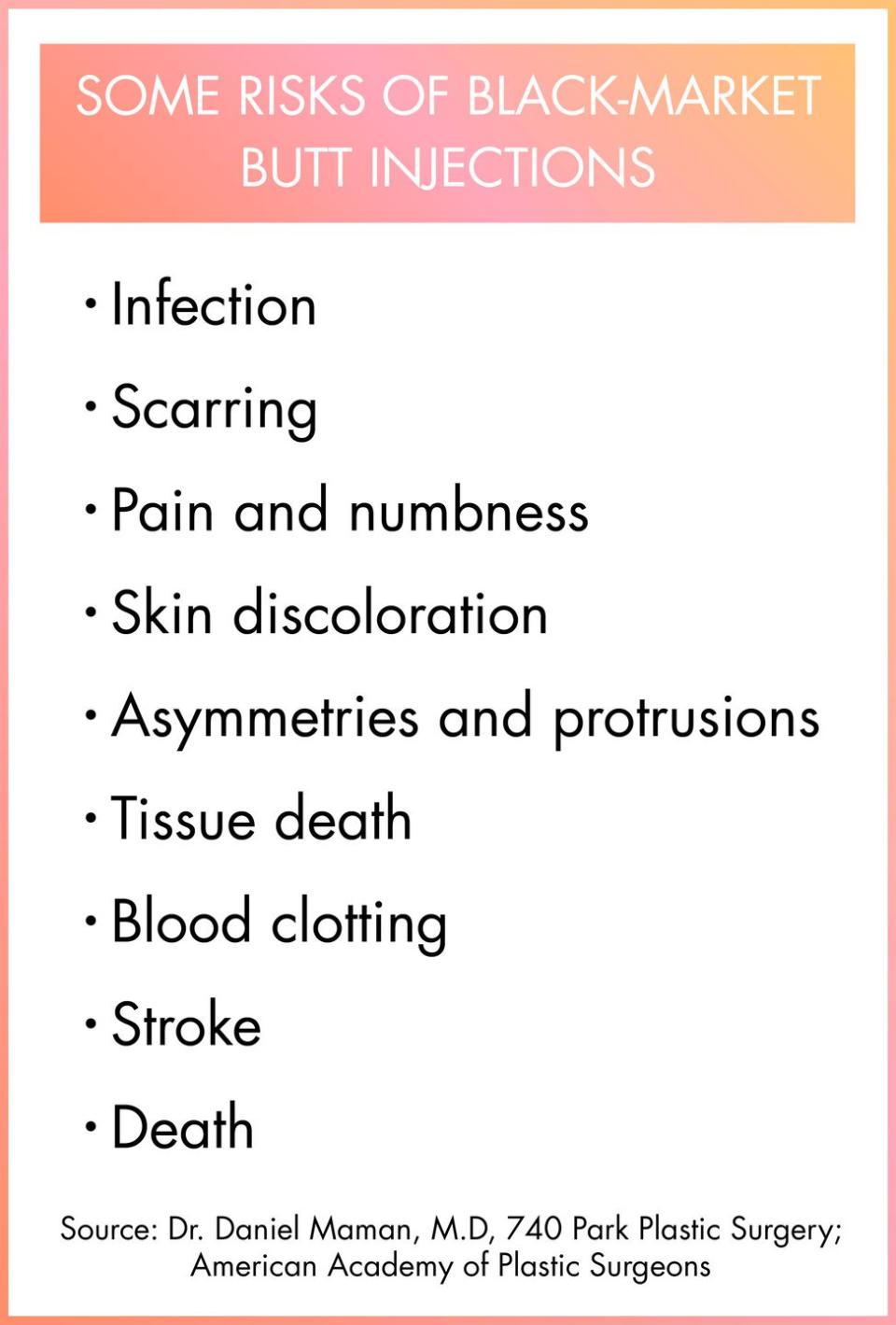
In 2014 I started training harder than ever, lifting heavy weights four to five times a week, eating well, and doing cardio, seriously sculpting my biceps, back, abs, hamstrings, and quads. When people asked about my technique, I worried that talking openly about my butt injections would invalidate my hard work. At the same time, I didn't want to deny what I'd done. So that year, I decided to share my story on Instagram. Although I'd later delete the posts to make my feed look more cohesive, at the time, I thought, This will prove I'm not trying to hide it. Besides, who's really going to care?
While many people seemed to appreciate my transparency, others dismissed me as a fraud all because I'd superficially enhanced my butt. I wasn't getting any credit for my effort, as I'd feared. The negativity weighed on me.
Around the same time, I Googled "silicone butt-injection removal" and realized just how much danger I'd put myself in by getting the procedure in the first place: I found stories of women who'd died before they could even wrap their heads around regret and others who were left deformed by injection removal - all of which gave me a lot of anxiety.
It would be difficult, I learned, to undo my mistake: Most of the doctors I found online didn't offer the procedure. Others charged up to $20,000, none of which would be covered by insurance.
Ultimately, my decision to get my injections removed had little to do with social media: Over the years, as I gained muscle mass, my butt had gotten bigger and bigger from scar tissue, which continuously grew around the silicone modules between my skin and muscle as a defense mechanism against the foreign objects. The growth made my skin itch and show redness, cellulite, and denting. It became increasingly difficult to find clothing that fit or go to school with my kids without feeling like I had to hide my body.
I wasn't just over the way it looked-on top of my mounting insecurities, any time I'd sit for more than an hour or two, like during a movie or flight, I'd experience the kind of pain you feel in your legs when you're kneeling for too long. I desperately wanted the silicone out of my body.
Eventually I found a board-certified plastic and reconstructive surgeon based in Florida who agreed to operate on me for $17,000. But I'd also found my soulmate, got married, and got pregnant quickly, so I waited to schedule the procedure until my son was born in July of 2017.

The pregnancy weight gain left my butt larger than ever, but because I knew recovery could be trying - I was told it would take two weeks to get back on my feet and up to eight weeks to feel better - I waited until January 2018, when my husband could take off from work to look after the baby.
Leading up to surgery, I decided I wanted to share my story as a warning to others considering illegal butt injections. I reached out to The Doctors, and they cast me on their show, ultimately offering to cover my surgeon's fee - a blessing, even though my athleisure company, Bodied Sport, was running itself at that point and I could have paid for it myself.
Meanwhile I grew increasingly anxious about the surgery. I'd need general anesthesia and was worried I'd never wake up. I wasn't just scared for my life, I was nervous for my family: I had three kids who needed me. I also knew there was a high risk for post-operative infections, since there's always bacteria in the area where incisions would be made.
On January 16, 2018, I went in for the outpatient surgery without knowing how much silicone they'd be able to remove or what my butt would look like afterward, since it's difficult to predict before breaking the skin.
It was supposed to take less than two hours but ended up lasting nearly six. By the time I woke up, I'd lost a lot of blood and felt so dizzy I was unable to stand.
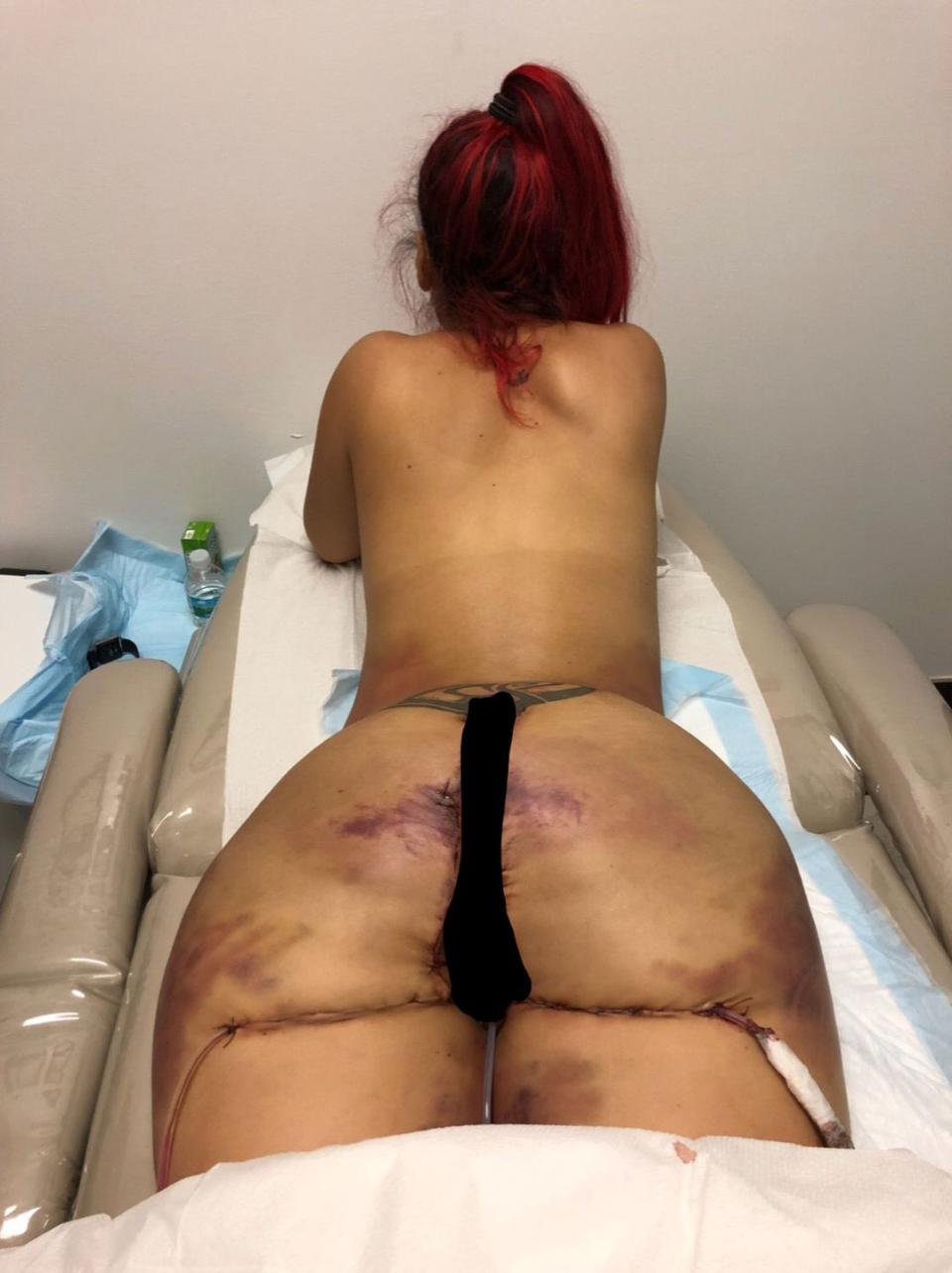
The rest of the day was a blur: Once I was discharged and made it back to my hotel with the friend who'd come along to care for me, I struggled to see or hear - a result, I later learned, of extremely low blood pressure. I remember being terrified to fall asleep, convinced I'd never open my eyes again. At one point, I blacked out to the sound of my friend shouting my name.
When I returned to the surgeon's office the next morning, nurses put me on an IV to raise my blood pressure and iron levels. They continued to stabilize me until about 5 p.m., when a staff member drove me to the emergency room to expedite admission. (Had I been in my right mind, I would have called an ambulance myself.) At the hospital, I received three blood transfusions over the course of three days before returning to my hotel.
During the next two weeks, I lived out of a hotel room and went to see the surgeon every day to have my incisions checked. Although I was taking oxycodone painkillers every four to six hours, the pain in my butt was so unbearable that there wasn't much I could do much besides cry. I'd walk to the bathroom very slowly - I used a women's urination device to pee standing up, or squatted while holding onto a wall, since I couldn't put any pressure on the area - then got back in bed on my side or stomach. My entire body hurt.
Thirteen days after my surgery, I boarded a flight home to Atlanta. I had to be wheeled to the gate and it was beyond painful to sit. After busting several stitches getting to the plane, I stood by the restroom the entire flight.
I went to a local board-certified plastic surgeon who confirmed that blood had stopped circulating to certain areas of my butt after my surgery. This had caused surrounding tissues to die - a complication known as necrotic tissue. The only way to treat it, he told me, was to remove it.
It only took about 30 minutes. Because my nerve endings in the area were dead, I didn't undergo anesthesia, and I didn't feel a thing as he carved away at the surface of each of my butt cheeks, scooping out a four-inch-wide section on my right side and a five-inch-wide section on my left. He went as deep as two inches in some places.
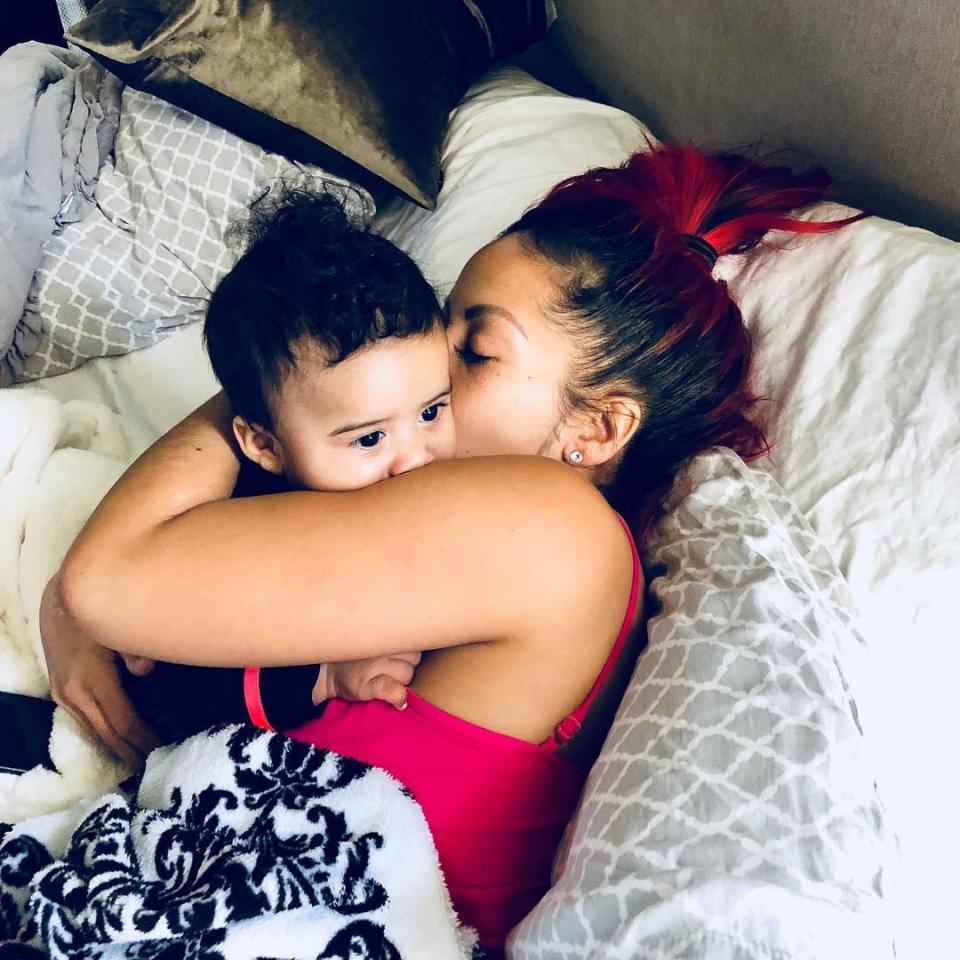
It was difficult to wrap my head around what he was doing. After, I couldn't stomach looking at the pictures.
Since there were no neat edges for the surgeon to stitch, I was left with two raw, open wounds that had to be packed with saline-drenched gauze, covered with surgical pads, and taped closed to prevent infection.
Back at home, I could barely walk for four days. It was awful having to rely on my husband and kids to do everything for me, since I'm usually the one who takes care of everyone else.
Getting in and out of bed was pure torture. My husband, who has no medical background, removed my bandages, cleaned both lesions, and re-bandaged the area twice a day, which took about 30 minutes each time. I've had two vaginal births and one C-section, but on the pain scale, bandage changes were up there.
After two and a half weeks, in mid-February, I got a portable battery-powered wound therapy vacuum - which is typically used for serious burns and ulcers - designed to drain blood and other fluids from the area to promote healing.
It attached to my sponge-packed wounds with strong suction cups about the size of a mini iPad, with a three-foot-long cord that connected to a Coke can-size canister that would fill up with foul-smelling gunk about every four days.
When a nurse came to my house to remove the suction cups, it was agony - I'd make my kids leave the house so they didn't have to hear me scream.
While waiting for my body to heal, I tried to stay positive to avoid feeling depressed about everything I'd been through - I knew there was nothing I could do but wait and appreciate the time I got to spend with my kids while I was stuck in bed.
Now, my butt is a crack with sunken wounds on either side. Fresh scar tissue is growing in, so I no longer have to pack my wounds, just bandage them. But the area is super itchy and so tight that I can't squat and I struggle to spread my legs. I'll have to relearn how to bend over and squat, but I can finally hold my baby, sit on a pillow, and drive, although it still hurts a bit. I've lost about 15 pounds of muscle mass and a lot of my strength but have begun doing upper body and core exercises, and even tried some hip thrusters to activate my glutes and thighs. It felt great.
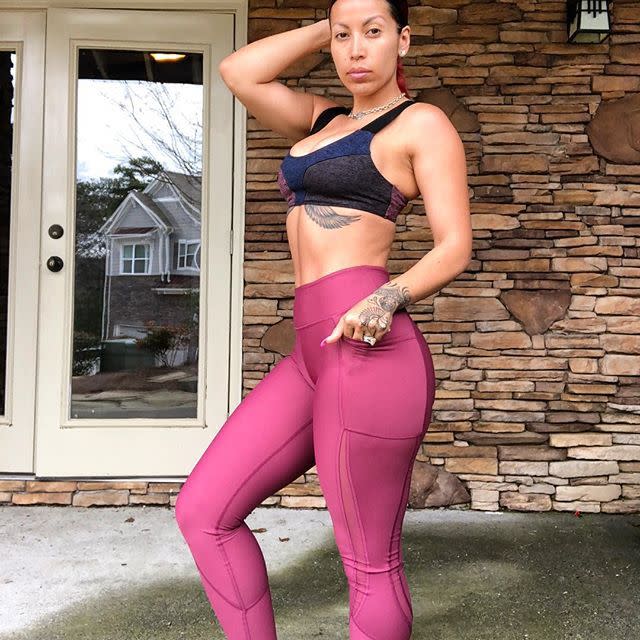
Aesthetically, the necrosis really screwed me up. Where the roundest part of my butt used to be, there's now a dip. Eventually, I may get a fat transfer - when a surgeon takes fat from one part of your body and injects it elsewhere - to make my figure look normal again, but for now, I'll have to see how I heal and whether I can ever get over the fear of going into another surgery.
Despite the complications, I don't regret having my injections removed - I just wish it didn't cause so much damage. Actually I wish I'd never gotten myself here in the first place.
My natural butt was way better than what I'm dealing with now. Had I embraced my shape, I wouldn't have risked my life the way I did. I just hope other women avoid making the same stupid decisions. It's ridiculous what we do when we don't love ourselves.
You Might Also Like

